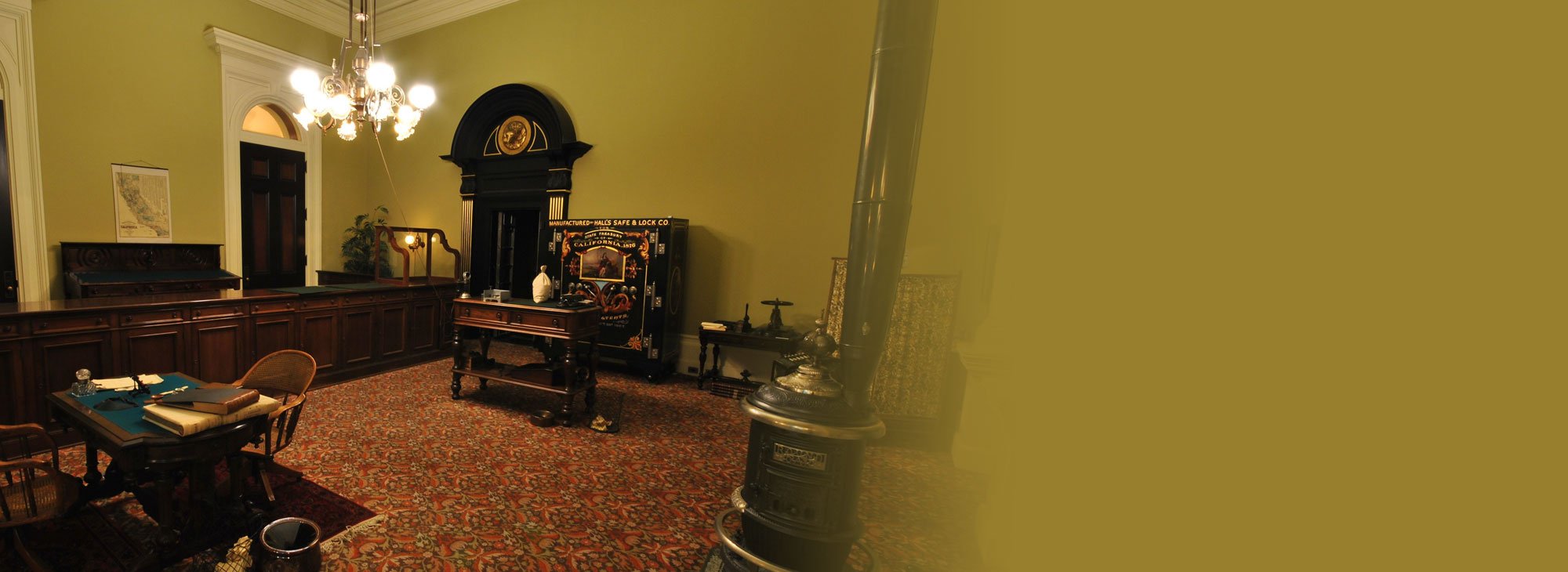Capital or Capitol?
Capital - A city where the government of a country, state or province conducts its business (also known as the "seat" of government).
Capitol - A building or group of buildings where a state government meets and where other state government offices may be located.
The History
Choosing California's Capital was a long, hard task. California became a state in 1850. It took until 1854 for the state's founders to make Sacramento the premanent Capital. People still tried to move the Capital many more times to Oakland(1858-59), San Jose (1875-78, 1893, 1903), Berkeley (1907) and Monterey (1933-41).Before Sacramento was chosen, other cities were California's Capital, each for a year or two.

Monterey - September 9, 1848 - October 13, 1849
Monterey became the capital shortly after the end of the Mexican American war. The city was a natural choice because the Mexican government had used it. When they departed, they left behind empty missions, forts and other buildings that the state’s new government was able to use. These buildings were small and none were grand enough to be a Capitol building. They decided to let cities compete to become the state’s Capital.
Pueblo de San Jose - December 15, 1849 - May 1, 1851
The Legislature moved to Pueblo de San Jose in December 1849. The building the town provided for them was very different than they expected. The adobe building, built as a hotel, was small and poorly lit. Also, the legislators could not find places to eat or sleep in the town. The grumpy state legislators soon grew tired of the building. They began accepting offers for a new state capital and quickly moved the capital to Vallejo.
Vallejo - January 5, 1852 - January 12, 1852
General Vallejo and his workers did not finish the Capitol building by the date they had promised. The building was still under construction when the state legislature arrived on January 5, 1852. After only a week, the Legislature decided the conditions were too poor to continue working. The Legislature decided to temporarily move itself to Sacramento until the building could be completed.
Sacramento - January 16, 1852 - November 2, 1853
When they arrived in Sacramento, the legislature asked the town of Pueblo to San Jose to send its records from the time it was there. They were surprised to find out that JD Hoppe of Pueblo de San Jose had issued an order stopping the transfer of the papers. Hoppe's order stated that the legislators' move to Vallejo was illegal because General Vallejo did not keep his promise to finish the Capitol building in time, so the Capital should return to Pueblo de San Jose.
Vallejo - January 3, 1853 - February 4, 1853
The Legislature returned to Vallejo only to find the Capitol building still under construction. General Vallejo was again blamed for not finishing the building and he asked to be released from his contract. He claimed that the Legislature's move the year before had damaged his reputation. The Legislature agreed to end the contract and moved to the city hall building of nearby Benicia.
Benicia - February 11, 1853 - February 25, 1854
Benicia City Hall was too small for the state's legislature, but it was better than the unfinished building in Vallejo. It was fine for one year, but it would not do as a permanent home. The city of Sacramento bid to move the legislature back to the courthouse building that it had occupied during its first move from Vallejo. Despite worries that moving the capital would cause people to lose faith in the new government, the legislature agreed to the move.Sacramento - February 18, 1854 - Present
After several moves, the state's government was ready to find a home. Everyone was pleased with the city's courthouse and quickly decided that Sacramento would make a great Capital City. The legislature finally passed the laws to make Sacramento the permanent state capitol.With the capital city established, California needed to create a true Capitol building. The legislature set aside $500,000 for construction and began building in 1860.
